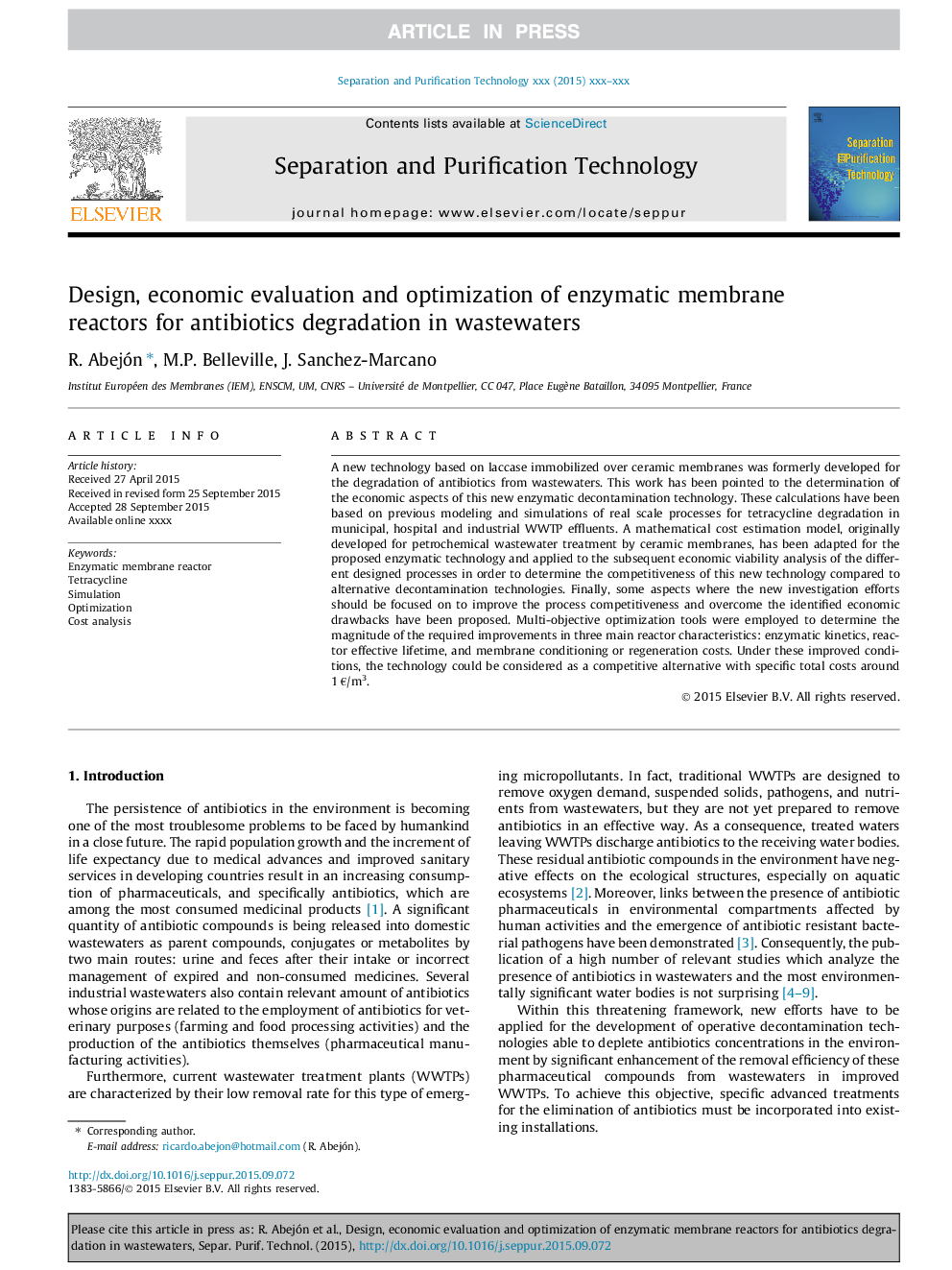| Article ID | Journal | Published Year | Pages | File Type |
|---|---|---|---|---|
| 10389675 | Separation and Purification Technology | 2015 | 17 Pages |
Abstract
A new technology based on laccase immobilized over ceramic membranes was formerly developed for the degradation of antibiotics from wastewaters. This work has been pointed to the determination of the economic aspects of this new enzymatic decontamination technology. These calculations have been based on previous modeling and simulations of real scale processes for tetracycline degradation in municipal, hospital and industrial WWTP effluents. A mathematical cost estimation model, originally developed for petrochemical wastewater treatment by ceramic membranes, has been adapted for the proposed enzymatic technology and applied to the subsequent economic viability analysis of the different designed processes in order to determine the competitiveness of this new technology compared to alternative decontamination technologies. Finally, some aspects where the new investigation efforts should be focused on to improve the process competitiveness and overcome the identified economic drawbacks have been proposed. Multi-objective optimization tools were employed to determine the magnitude of the required improvements in three main reactor characteristics: enzymatic kinetics, reactor effective lifetime, and membrane conditioning or regeneration costs. Under these improved conditions, the technology could be considered as a competitive alternative with specific total costs around 1 â¬/m3.
Related Topics
Physical Sciences and Engineering
Chemical Engineering
Filtration and Separation
Authors
R. Abejón, M.P. Belleville, J. Sanchez-Marcano,
